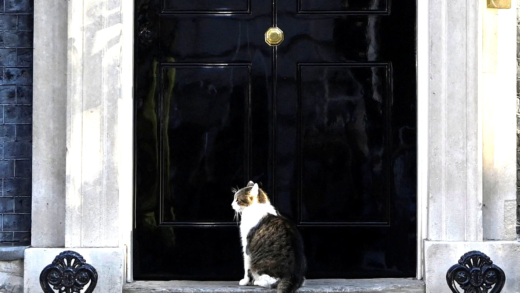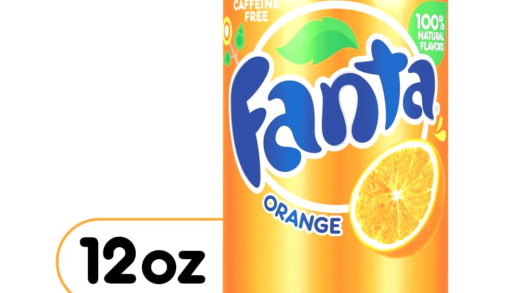Red cars are often perceived to attract more police attention, but studies reveal that actual traffic stop data does not support this belief. Factors like driver behavior and societal perceptions play a more significant role in these myths. Anecdotal evidence and personal experiences further complicate the narrative, highlighting the importance of focusing on driving habits rather than car color.
The Red Car Myth: Do They Really Get Pulled Over More?
Do red cars get pulled over more often? This question has lingered in the minds of many drivers and car enthusiasts alike. The belief that red cars attract police attention more than vehicles of other colors is widespread, but is there any truth to this claim? Studies have shown mixed results, suggesting that while some people perceive red cars as being stopped more frequently, the actual statistics may not support this notion.
Factors such as the driver’s behavior, traffic laws, and even the time of day play significant roles in traffic stops. Interestingly, a study from the University of California revealed that the color of a car is less influential than the actions of the driver. In fact, police officers often cite speeding or reckless driving as the primary reasons for traffic stops, regardless of the car’s color.
To summarize, while the myth persists that red cars get pulled over more often, the reality is more complex. It’s essential to consider driver behavior and other contributing factors rather than solely attributing traffic stops to the color of the vehicle.
Statistical Evidence: What Do the Numbers Say?
When looking for concrete data regarding red car speeding statistics, various studies can provide insight. Research conducted by the National Highway Traffic Safety Administration (NHTSA) showed no direct correlation between car color and the likelihood of receiving a speeding ticket. In fact, they found that other variables, such as the age of the driver and the vehicle’s make and model, had a more significant impact on traffic violations.
Moreover, another study analyzed police reports over several years and concluded that blue and black cars were pulled over more frequently than red ones. This suggests that the notion of red cars being targeted may be more of a perception issue than a statistical reality.
In summary, while popular belief may lean towards red cars being pulled over more often, statistical evidence does not support this claim. Understanding these numbers can help dispel myths and encourage drivers to focus on their behavior on the road.
Factors Influencing Perception: Why Do We Think This?
Several psychological and societal factors contribute to the belief that red cars are more likely to be pulled over. One major factor is the visibility of color. Red is a bright and attention-grabbing color, often associated with speed and excitement. This perception can lead to the assumption that red cars are driven more aggressively.
Additionally, cultural influences play a role. Media portrayals frequently depict red cars as symbols of rebellion or high speed, reinforcing the stereotype. Drivers may also subconsciously associate red cars with higher rates of violations simply because they stand out more on the road.
To sum up, while the belief that red cars get pulled over more often exists, it is primarily influenced by psychological factors and societal perceptions rather than hard evidence. Recognizing these influences can help drivers understand the misconceptions surrounding car color and traffic stops.
Police Perception: Do Officers Have Color Preferences?
Police perception of car colors can influence traffic stops. Some studies suggest that officers may have biases towards certain colors, including red. For instance, red cars are often associated with speed and aggression. This stereotype might lead officers to pay more attention to them. However, the reality is more nuanced.
Research indicates that while there may be a perception of bias, actual traffic stop data does not consistently support the notion that red cars are pulled over more frequently. Factors such as the driver’s behavior and the context of the stop play a more significant role.
Key points regarding police perception include:
- Red cars are often seen as flashy, which may draw police attention.
- Officers are trained to assess behavior over color.
- Statistical data often shows no significant difference in stop rates by color.
In conclusion, while there may be some anecdotal evidence of color preferences among officers, the data does not strongly support the idea that red cars are targeted more than others.
Car Color and Insurance Rates: Is There a Connection?
When discussing car color and insurance rates, it’s essential to note that red car speeding statistics often come into play. Insurance companies consider various factors when determining premiums, and car color is one of them. Some believe that driving a red car can lead to higher insurance costs due to the perception that red cars are driven more recklessly.
However, the reality is that insurance rates are influenced more by the driver’s history, the vehicle’s safety ratings, and its likelihood of theft rather than the color alone. Key factors to consider include:
- Driver’s record: A clean driving history typically leads to lower rates.
- Vehicle model: Some models are statistically more prone to accidents or theft.
- Color perception: While some insurers may consider color, it is generally not a primary factor.
In summary, while red cars may carry a stereotype that affects public perception, actual insurance rates are determined by a combination of more significant factors.
Driver Behavior: The Bigger Picture
Driver behavior is a critical factor in traffic stops, overshadowing car color entirely. Regardless of whether a car is red, blue, or any other color, the actions of the driver play a pivotal role in determining whether they will be pulled over. Studies consistently show that speeding, reckless driving, and traffic violations are the primary reasons for traffic stops.
Some considerations regarding driver behavior include:
- Speeding: This is the most common reason for traffic stops.
- Traffic violations: Running red lights or stop signs increases the likelihood of being stopped.
- Driving style: Aggressive driving can attract police attention, regardless of vehicle color.
In conclusion, while car color may influence perceptions, it is the driver’s behavior that truly matters. Focusing on safe and responsible driving is the best way to avoid traffic stops, irrespective of the vehicle’s color.
Studies on Car Color and Traffic Stops: What’s Out There?
Research on the relationship between car color and traffic violations reveals intriguing findings. Studies have consistently shown that certain colors, including red, are often discussed in the context of traffic stops. However, the actual data may not support the widespread belief that red cars are pulled over more frequently. For instance, a comprehensive analysis conducted by the National Highway Traffic Safety Administration (NHTSA) found no significant correlation between car color and the likelihood of receiving a traffic violation.
Instead, factors like driving behavior, time of day, and location play a more critical role. For example, research indicates that black and blue cars are statistically more likely to be stopped than red ones. This suggests that the perception of red cars being targeted is more about societal beliefs than empirical evidence. Furthermore, several academic studies have focused on car color and traffic violations, yet none have definitively concluded that red cars face higher scrutiny from law enforcement.
In summary, while studies have explored the connection between car color and traffic stops, they often highlight the importance of driver behavior and other contextual factors over color alone.
Anecdotes and Observations: Real-Life Experiences
Real-life experiences often shape our perceptions of car color and traffic enforcement. Many drivers have anecdotes about being pulled over, particularly those who own red cars. One common story involves a driver who felt unfairly targeted by police due to their car color, despite having a clean driving record. These personal narratives contribute to the myth that red cars attract more police attention.
Interestingly, some drivers have reported that their red cars seem to elicit more comments from officers during traffic stops, regardless of the reason for being stopped. For instance, a driver might be pulled over for speeding, but the officer comments on the car’s color, reinforcing the idea that red cars stand out more.
Moreover, social media platforms are filled with discussions and memes about red cars and police encounters, further fueling the stereotype. However, these anecdotes often lack statistical backing and should be viewed with caution. They serve more as reflections of individual experiences rather than concrete evidence of a widespread trend.
Ultimately, while stories about red cars being pulled over abound, they highlight the subjective nature of perception rather than establishing a clear connection between car color and traffic stops.
Conclusion: What Have We Learned?
The exploration of red cars and their association with traffic stops reveals a complex interplay of perception, behavior, and statistical evidence. Despite the common belief that red cars get pulled over more often, studies indicate that car color has little impact on traffic violations. Instead, factors such as driver behavior, location, and time of day are far more influential.
Additionally, anecdotal evidence and societal perceptions contribute to the myth surrounding red cars. Personal stories may reinforce the idea of bias against certain colors, but these narratives do not hold up against empirical data. Ultimately, focusing on safe driving practices is the most effective way to avoid traffic stops, regardless of car color.





Comments are closed.